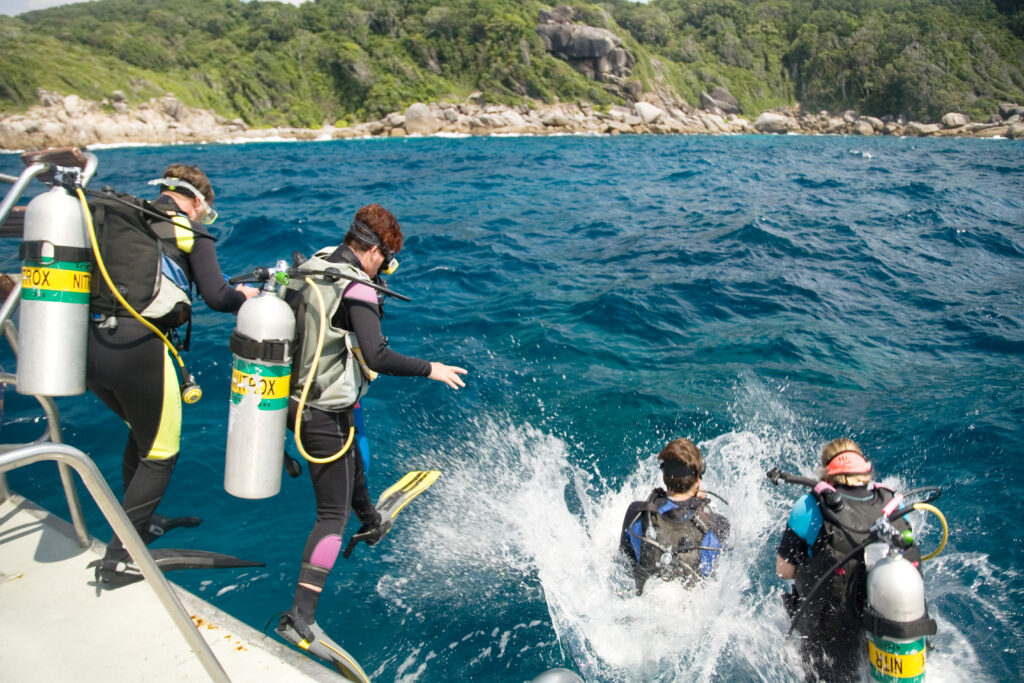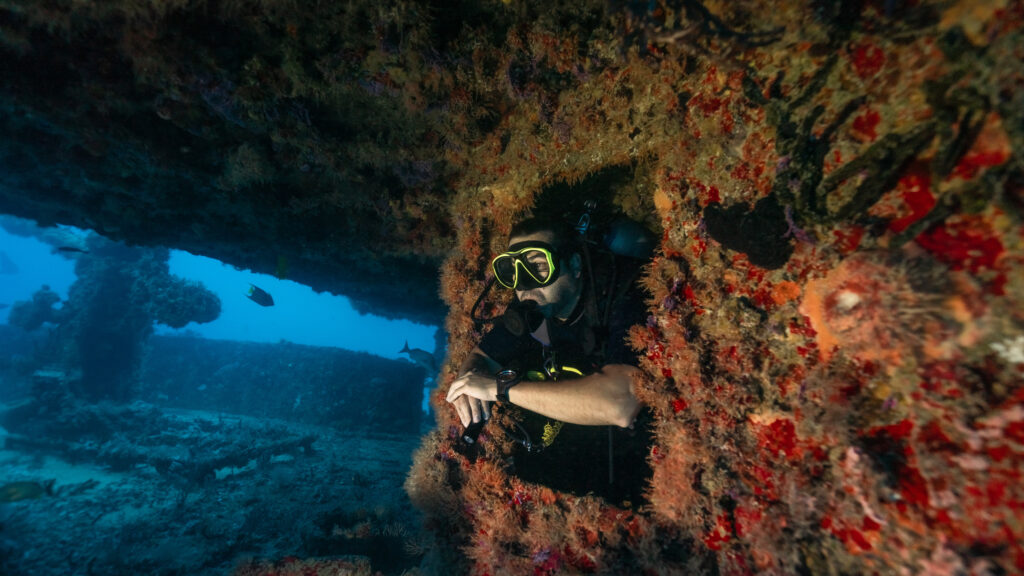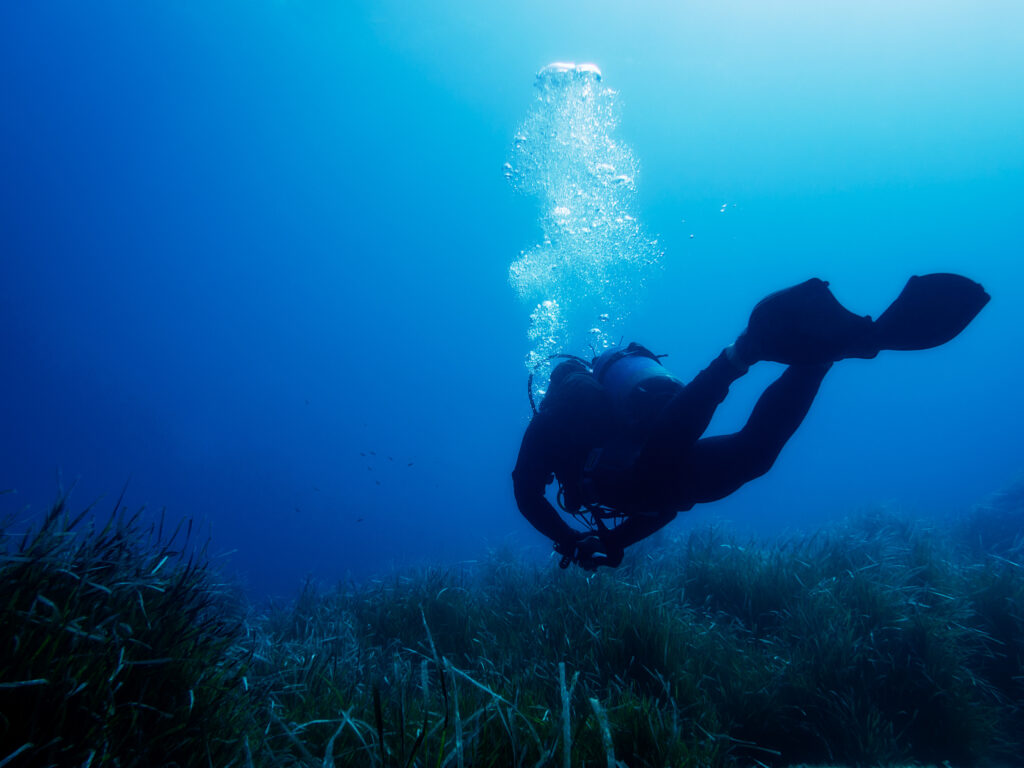What is the National Association of Underwater Instructors (NAUI)?

The National Association of Underwater Instructors (NAUI) is a globally recognized non-profit organization dedicated to scuba diving education and training. Established in 1959, NAUI has been instrumental in shaping the standards and practices of the diving industry, promoting safety, education, and environmental awareness. With a commitment to providing high-quality training and fostering a community of well-informed and responsible divers, NAUI has become one of the most respected certifying agencies in the scuba diving world.
What is a cavern in the context of diving?

A cavern, in the context of diving, refers to a semi-enclosed underwater area where natural light is still visible and the entrance remains within view. These formations often occur in rock, creating unique and accessible underwater environments for divers. Cavern diving involves the exploration of these partially enclosed spaces, distinct from full cave diving, where the entrance may no longer be visible and natural light does not penetrate. Cavern divers can enjoy the sensation of venturing into more confined underwater environments while still maintaining the safety net of knowing they can see their way out and rely on natural lighting to guide their orientation. This article will explore the history of cavern diving, its unique geological features, required training and equipment, and the essential guidelines for ensuring safety and responsible diving practices.
What is a Scuba Diver?

What is a Scuba Diver? A scuba diver is a person who engages in the recreational or professional activity of swimming underwater using SCUBA equipment. The term “scuba” is an acronym for “self-contained underwater breathing apparatus,” which allows scuba divers to breathe comfortably beneath the water’s surface while exploring the aquatic world at their leisure. […]
What is Scuba Diving?

Scuba diving is a recreational and professional activity where individuals explore underwater environments using self-contained underwater breathing apparatus (SCUBA) equipment. This equipment allows divers to stay underwater for extended periods, enabling them to experience marine life, shipwrecks, caves, and other submerged wonders. The ability to explore these otherwise inaccessible areas has made scuba diving a popular pursuit for adventure enthusiasts, marine biologists, and professional divers alike. Since its modern development in the 20th century, scuba diving has attracted millions of people globally, offering a unique blend of excitement, discovery, and tranquility beneath the waves.
What is it to “Call a Dive” When Scuba Diving?

In scuba diving, the term “call a dive” refers to the decision to end a dive and return to the surface. This decision is a critical aspect of dive safety and can be made by the diver, their buddy, or the dive leader. The rationale for calling a dive can vary from diver safety concerns to environmental changes, but it always centers on ensuring the well-being of all involved. By understanding when and why to call a dive, divers can prevent potentially dangerous situations and avoid unnecessary risks.
What is the Maximum Operating Depth?

Maximum Operating Depth (MOD) is a critical concept in the field of scuba diving. It refers to the deepest depth at which a particular gas mixture can be used safely without the diver experiencing oxygen toxicity. Understanding and adhering to the MOD is essential for ensuring diver safety and preventing potentially life-threatening conditions. MOD varies depending on the gas mixture being used and is influenced by the partial pressure of oxygen within the breathing gas. By comprehending the significance of MOD, divers can plan their underwater excursions more effectively and reduce the risks associated with diving to greater depths.
What Are Gaseous Impurities?

What Are Gaseous Impurities? In the world of scuba diving, ensuring the purity of breathing gas is paramount. Gaseous impurities refer to any unwanted substances present in the air or gas mixtures used by divers. These impurities can include various gases that, if inhaled in significant quantities, pose serious health risks. Maintaining the highest standard […]
What is a Lifeline?

A lifeline in scuba diving is a critical safety device designed to ensure the diver’s connection to a secure point, whether it be a boat, surface support, or another diver. This tether provides a physical or electronic means of communication and safety, offering reassurance and vital linkage in underwater environments. Given the potential dangers inherent in scuba diving, such as strong currents, poor visibility, and equipment failure, lifelines serve as essential tools for maintaining diver safety and facilitating effective rescue operations if needed.
What is a Gas Fraction?

In the context of scuba diving, a gas fraction refers to the proportion of each gas component within a breathing gas mixture. Understanding gas fractions is crucial for divers to ensure safe and efficient breathing under water. The significance of gas fractions cannot be overstated, as they directly influence dive planning, physiological effects on the body, and overall safety. By grasping the fundamentals of gas fractions, divers can make informed decisions that enhance their underwater experience while minimizing risks.
What is Open Circuit Scuba?

Open circuit scuba diving is a method of underwater diving in which the diver breathes from a tank of compressed gas and exhales directly into the water. This system is contrasted with closed-circuit systems, where exhaled gas is recycled and re-breathed. Open circuit scuba is the most common and widely used system in both recreational and professional diving. It is valued for its simplicity, reliability, and the extensive training programs available to certify divers. The ease of use and availability of open circuit scuba equipment have made it a cornerstone of underwater exploration.
